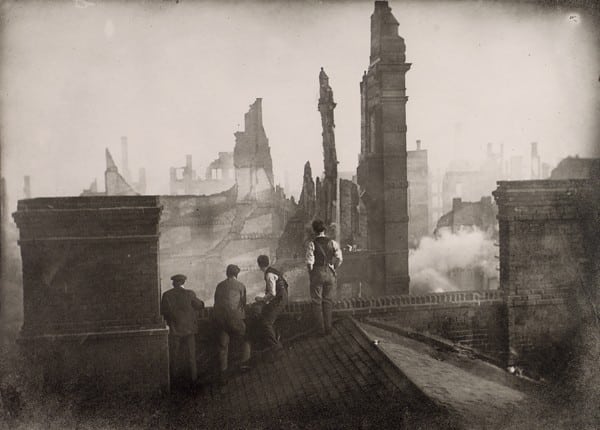

You are using an outdated browser. Please upgrade your browser to improve your experience and security.

In the evening of April 19, all was quiet since most of the buildings had closed at 6 pm. A beat-walking police constable noticed flames coming from the Currie building on Wellington Street and raised an alarm.
Despite the efforts of 250 firefighters, many from surrounding townships including Brantford, Hamilton, London and Peterborough, and the use of nearly 2.5 million gallons of water over the course of nine hours, the commercial heart of the city was ravaged. More than a hundred buildings were lost, and the damages amounted to more than $10 million ($282 million today). Five thousand jobs were lost, at a time when the city’s population was about 200,000. That would be like 750,000 people losing their jobs today.
The cause of the fire was never established.
Two years later, a former hotel clerk named Thomas Mossop purchased a lot just outside of the fire zone and proceeded to build, according to the November 1909 issue of Construction Magazine, “one of the most thoroughly constructed fireproof buildings in the Dominion.”
Some of the clever fire-retardant features included by architect J.P. Hynes were a foundation of 18 concrete wells running down to the bedrock, steel work protected with non-combustible materials, iron stairways with slate treads, fully enclosed elevators, metal doors and window frames, and fireproof glass windows.
In 1909, the 48-room Mossop Hotel opened and prospered for nearly two decades, succumbing in 1927 to the detrimental effects of prohibition and the Great Depression. Brothers George and Michael Elliot subsequently purchased the building, made extensive renovations and reopened the result as the Hotel Victoria, in honour of the Queen.